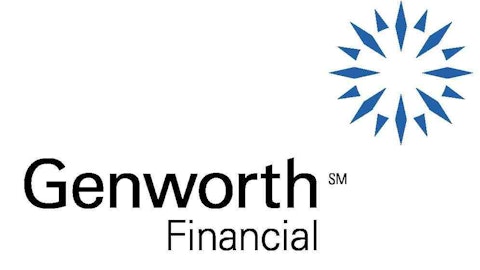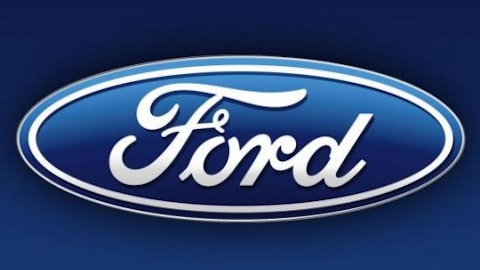The US auto industry, which started the year with a bang in January, experienced modest growth in February as automakers witnessed decent sales gains. Despite concerns over raised taxes and gas prices, the sector enjoyed solid momentum as buyers continued hitting the auto showrooms. The improving housing market is driving automotive sales, even as the economy remains sluggish. The Detroit Three, together with Japanese automaker Toyota Motor Corporation (ADR) (NYSE:TM), experienced growth in February. In fact General Motors Company (NYSE:GM) blew past analyst expectations of a 4.6% sales gain to post a handsome 7.2% growth. Let’s take a closer look at the auto giants’ performance.

Domestic carmakers, including General Motors Company (NYSE:GM), Ford Motor Company (NYSE:F) and Chrysler saw remarkable sales growth, while foreign makers Volkswagen AG (ADR) (PINK:VLKAY) and Toyota witnessed a moderate increase in sales. Overall, the auto industry had good momentum, though Honda Motor Co Ltd (ADR) (NYSE:HMC) and Nissan Motor Co., Ltd. (ADR) (PINK:NSANY) suffered slight declines in their sales numbers.
General Motors Company (NYSE:GM) reported its best February since 2008 with a fantastic 7% growth against estimates of 4.6%. The growth was led by the Chevrolet Silverado pickup, which witnessed a massive sales jump of 29%. Supported by solid demand for its crossovers and trucks, the Detroit carmaker sold 224,314 units, up 7% from last year’s comparable month. The performance of the top US automaker’s four divisions, Cadillac, Chevrolet, Buick and GMC, were impressive, with Cadillac recording the highest rise in sales at 20.3%. One important factor that is driving the company’s sales is the economy’s recovering housing and construction sector. Growth in the housing and construction segment requires businesses to replace older vehicles with new ones. This has become unavoidable given that the average age of US pickup trucks is over 11 years now.
The second largest US automaker, Ford Motor Company (NYSE:F), recorded a 9.3% gain in sales. The company could not beat estimates but reported its best February since 2007 by selling 195,822 vehicles during the month. This was driven by strong F-Series pickup sales, which rose 15%. The carmaker’s Fusion and Escape also witnessed robust rise of 28% and 29%, respectively. The two models, Fusion and Escape, enjoyed record high totals for the month and accounted for over a quarter of Ford Motor Company (NYSE:F)’s aggregate February sales.
Chrysler reported a modest growth of 4.1% for the month and sold 139,015 vehicles. The automaker’s growth slowed down as expected since it stopped manufacturing the Jeep Liberty midsize SUV. The latest Jeep Cherokee is expected to roll out this summer. The automaker’s popular brands Ram Truck, Fiat and Dodge saw sales gains, with Dodge recording the highest sales gain of 30%.
Foreign carmaker Volkswagen’s sales were up 2.9% to 31,456 units compared to the same period last year. Though VW recorded its best February since 1973, the rate of growth declined sharply given that it posted a 31% increase last year in February. On the other hand the world’s top automaker, Toyota, saw sales gains of 4.3% and managed to sell 166,377 units. The auto giant’s growth was helped by sales jump of the crossover RAV4, which rose 5%, and the Avalon sedan, which reported a massive sales hike of 63%. The company looks pretty confident with its fresh line of fuel efficient vehicles, and is particularly overwhelmed with consumer response for the new Avalon and RAV4.
Despite a stagnated economy, what is it that is driving the overall automotive sales?
The key drivers
Though the economy is slow, the US auto sector has consistently given positive results in the past few years after it got hit in 2009. Consumer confidence seems to be strengthening with time, as carmakers are replacing their aging models with new versions. Newer models with fantastic features offered by automaker have made it very difficult for buyers to resist replacing their old version with the latest one. In fact the pent-up demand is so strong that the increased gas price and tax are unable to suppress it. Huge demand that had been held back during the bad years is now driving the auto sales, as both households and businesses are buying new vehicles.
Moreover, easy credit at lower interest rates is another factor that is encouraging customers to buy new vehicles with impressive specifications. Though automakers have reduced discounts and other similar offers that eat away margins, lower finance rates and reasonable lease installments have made sure to attract buyers to the showrooms.
Final thoughts
Massive demand for new models backed by easy credit and a declining unemployment rate is driving US auto sales. The growth pace is expected to stabilize and become moderate for the rest of the year. It is essential for automakers to offer vehicles with great features and attractive specifications to remain competitive and take advantage of the improving demand, particularly as the European outlook remains dull.
The article The US Auto Industry has Solid Momentum originally appeared on Fool.com and is written by Rajesh Marwah.
Copyright © 1995 – 2013 The Motley Fool, LLC. All rights reserved. The Motley Fool has a disclosure policy.





